Why is my TTL/Auto-Exposure Overexposed?
What Is TTL?
TTL stands for "Through-The-Lens" and is your Flash’s “Auto-Exposure Mode. Your camera has a built-in light meter that measures the amount of light coming through the lens. With that information, your camera then tells your flash how much light to output to get what it thinks is the correct exposure. TTL Auto exposure can come in handy under certain situations, such as if you have your flash on camera, in a run-and-gun shooting situation, where you are constantly moving around, or if the lighting conditions are constantly changing, such as shooting outdoors, where the sun is constantly going in and out.
How Does TTL Work?
While different camera systems will have a slightly different approach, in general, when using TTL the flash fires a pre-flash a fraction of a second before the shutter opens, to calculate how much light it needs to output for the actual exposure.
Flash Exposure Compensation
Though your Camera and your flash work together get what they think is the “Correct Exposure”, you may not always get the exact results you were looking for. This is where Flash Exposure Compensation (sometimes abbreviated to FEC) comes in. Flash Exposure Compensation typically gives you the option of either brightening or darkening the exposure by ±3-Stops (this figure may vary from camera system to camera system). This enables you to get closer to the exposure you are looking for.

What Can Affect TTL Exposure?
Whilst the TTL auto flash mode works well in most scenarios, there are a few situations where using TTL mode may not give you the results you were expecting. Whilst the TTL does its best to give you the best results, certain lighting situations can confuse it, causing it to sometimes give you undesirable results. Here are a few things that can confuse your camera’s metering system.
A lot of Light tones or Dark tones in your Scene
Your camera uses a Reflected light meter, which measures the light being reflected from the objects in your scene. This means scenes with a lot of light tones in it (such as a snowy scene) may come out being under-exposed. On the other hand, scenes with a lot of dark tones in it (such as a nighttime scene) may come out over-exposed. While this aspect of camera metering systems has improved a lot over the years, it is by no means perfect.
Zooming-In or Out/Recomposing your Shot
Depending on your shooting environment, sometimes zooming in or out can affect TTL exposure too. Again, it comes down to the number of light tones and dark tones in the frame. For example, if you are photographing a light-skinned person on a dark background you may get a good exposure if zoomed in on your subject’s face, however, when you zoom out to include more of the background, you may find that the exposure on your subject’s face is brighter. This is because the average colour tone across the frame has darkened so your camera compensates for this by adding more light on the scene. Whilst camera technology is constantly improving, this can sometimes happen, even with the latest technology.
The AD200Pro II, a TTL-Compatible compact flash with interchangeable heads.
Your Camera’s Metering Mode
Your camera will have a selection of several metering modes, which can also affect TTL exposure. Some metering modes take a look at the tones in the overall frame and average them out, and others only take the subject you are focusing on into consideration (please refer to your camera’s user manual for the exact functions of each metering mode as they vary from camera system to camera system). If the subject you are photographing is significantly lighter or darker in tone than the tones in rest of the frame, then this may also affect exposure.
Possible Solutions
If you find that the TTL mode is overexposing, or under-exposing, see if one of the following solutions can help to remedy the problem.
Check Your Flash Exposure Compensation Settings
If you find that your camera is over-exposing or under-exposing, please check that you haven’t accidentally changed the Flash Exposure Compensation. If your FEC setting is set to 0, try setting it +1 or -1 (or however much you need depending on how far off the exposure is) and that should hopefully resolve the problem.
Check Your Metering Mode
Check that you are using the appropriate metering mode for the subject you are photographing. For example, using Matrix or Evaluative metering, will often give you a very different result compared to using Spot metering etc.
Try Bouncing the Flash
Instead of directly pointing the flash at your subject, if you have the option to, try bouncing the light off a wall or ceiling (please only do this if the wall or ceiling are neutral in colour otherwise the light from your flash will pick up the colour of the wall or ceiling you are bouncing it off).
Extra Nuggets of Knowledge
Here are a few more tips that may help you get the best results possible from your flash:
Using Auto White-Balance
Whilst using Auto white Balance doesn’t affect your flash or camera exposure, it can, however, cause the colours in your photographs become inconsistent especially when using flash. Since the camera doesn’t take the colour temperature of the light from the flash into consideration, you can often end up with undesirable results. We would recommend using either flash or daylight WB when using flash. If you are shooting in Raw, the White balance of the image can be corrected in post, however, using one of the other presets will make your life a lot easier as the colour temperature of each image will at least be consistent.

The Background falling into darkness
When you are shooting in a dark environment, the light from the flash can only do so much (usually to illuminate your subject) This is due to the Inverse Square Law, which describes how the brightness of light falls off over distance (please do a web search for the “Invers Square Law” for more information). If you would like to brighten the ambient exposure, then then the best thing to do is to slow your shutter speed down. Whilst lowering your shutter speed won’t affect the flash exposure, it will however, allow more light from the environment hit your camera’s sensor, resulting in a brighter overall image (this works best if your subject isn’t moving much).
Conclusion
Please remember that the human eye has a far greater dynamic range than even the most expensive cameras with the best sensors! The fact that a scene looks well-lit to your eye unfortunately has no bearing whatsoever on whether your camera will see the scene in the same way. It’s best to take into account the limitations of your camera and make exposure decisions with those limitations in mind. You can use flash or other lighting to illuminate subjects that are otherwise too dark for your camera to make out in order to bring the image closer to what you see in reality. Whilst TTL can make this easier for you, it’s not always perfect. In situations where you are not getting the results you are looking for, you can use Flash Exposure compensation or use the TCM function available on some Godox/PiXAPRO triggers to make the necessary adjustments.
PLEASE NOTE: Canon has changed their hot-shoe communication protocols for TTL between their DSLRs and some of their later EOS R-Series Mirrorless Camera bodies with the new multifunction Hot-shoe. Canon has varying pre-flash illumination level, where the older protocol expects a constant-level of pre-flash.
For more information on flash compatibility, please see the Flash and trigger compatibility blogs.
Is this Trigger Compatible with my Camera?


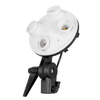



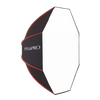






















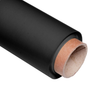



















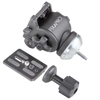











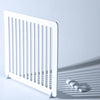















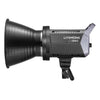

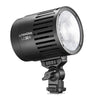

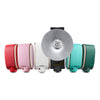




















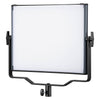
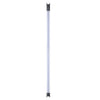


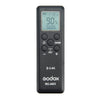





















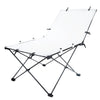

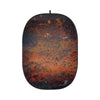









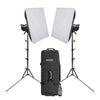



















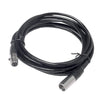

























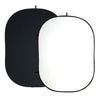





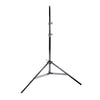
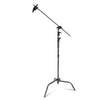






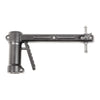
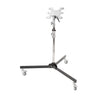
















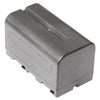






















































.png?v=1684398018113)



